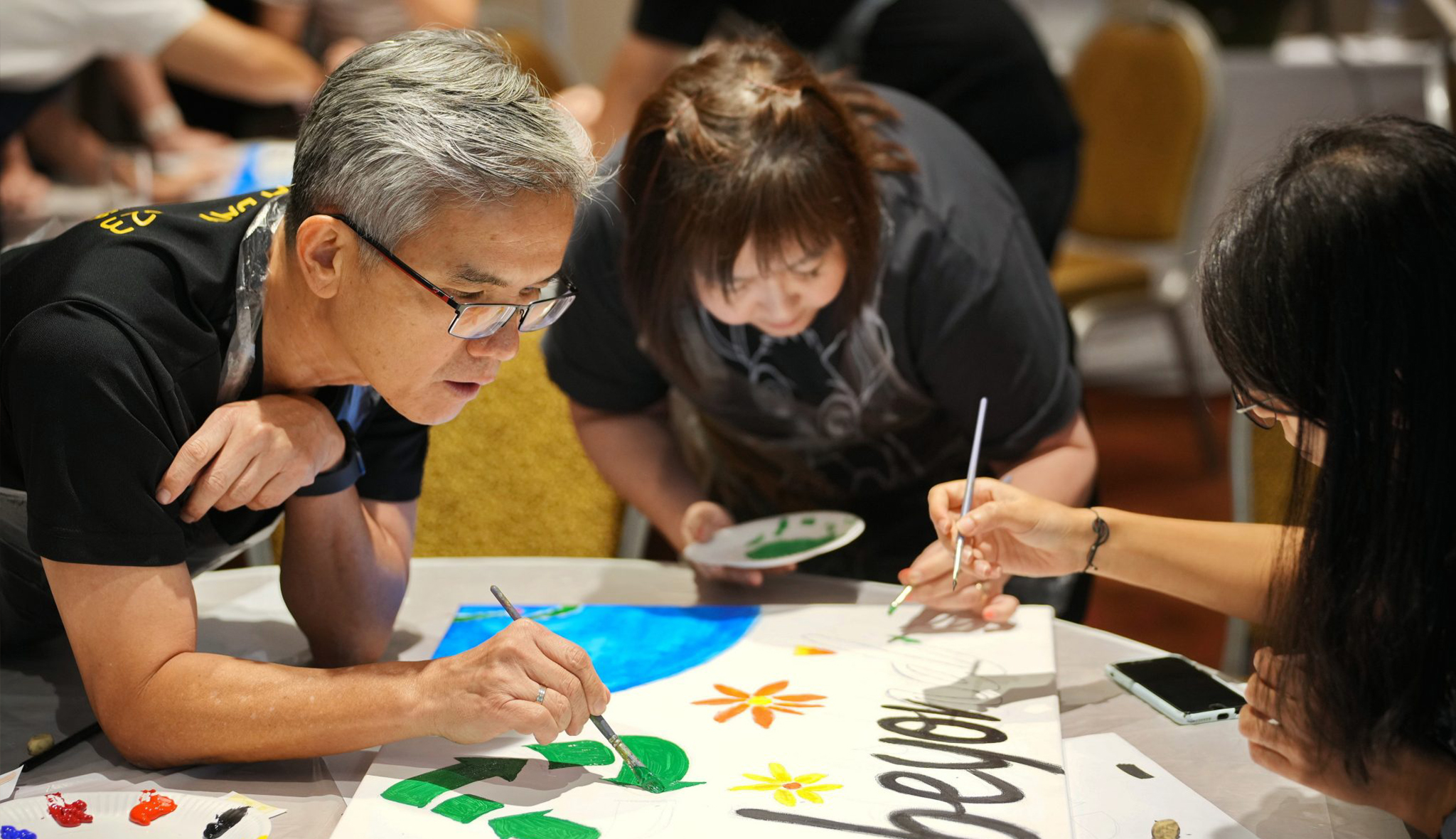零基础学习专业绘画,又能参加比赛,来看看我们的学生画展吧! 一切美好 Salt of the Earth 视觉艺术中心首次学生画展 《一切美好》画展是视觉艺术中心成立以来首次学生画展,展出的作品都是学生们近期独立创作的绘画作品,作品有油画,水彩,丙烯,素描,彩铅等。参展的学生有80余人,他们的年龄介于5岁至82岁之间。 展览日期&时间 12月7日至11日,每日11时至19时 联系电话: 62550711 / 67332155 新加坡视觉艺术中心是国家公园局支持的单位,于2016年1月31开始启用。自中心的展览厅启动以来,呈现过无数国际艺术家的主题个展和联展;中心的画室开设儿童和成人专业艺术课程。儿童绘画课是以儿童创意画、趣味画为主;成人绘画课程是针对年龄在12岁以上学生和成人开设,教学是以学院派专业绘画内容为主导,课程包括专业素描、油画、水彩、丙烯等。 新加坡视觉艺术中心具有完善的教学体系,导师们都是学院派科班出身,具有丰富的教学经验,针对学员不同的绘画水平,量身定制个性化课程,因材施教,设计的课程 由浅入深, 让学生们经过训练后,在专业绘画上打下非常扎实的基础, 导师们把学院派的长期教学内容设计为快捷“速成”培训课程,让学员们即学到专业的绘画知识又节省时间,在短时期内能达到独立画画并且可以独立创作的能力。 在这近四年期间,新加坡视觉艺术中心先后培训过近600多名学员,学员们来自不同的国家和不同种族,他们的绘画基础不一,但是经过在视觉艺术中心正规课程训练后,均得到明显提升。有的学生从零基础开始学习,学习两年或三年后,考入了本地和国外美术学院;有的学生经过两年基本功训练后,能进行独立创作并在绘画比赛获奖;有的学生通过绘画学习挖掘了自己的潜能和特长;有的学生通过绘画实现了儿时做画家的梦想;有的学生通过绘画体现自我价值,增强了自信;有的学生通过绘画找到了业余生活的寄托等等,视觉艺术中心是一个互相学习的大家庭,也是学生们精神生活的美好家园…… 部分学生作品 我们的专业绘画课程包括:素描/速写,油画,丙烯画,水彩画。 素描石膏人像 专业素描/速写 油画人物写生 专业油画课程 油画静物写生 专业水彩风景画 水彩静物写生 丙烯风景画 专业丙烯绘画课程 画室一角 快来报名参加我们的专业绘画课程吧! 报名热线:6255 0711 / 6733 2155 更多详情,请关注我们的网站: visualartscentre.sg Our Locations INTERESTED? Join us and Book …
Continue reading “零基础学习专业绘画,又能参加比赛,来看看我们的学生画展吧!”




















